The B.R.E.W. Framework: How We Decide Which Marketing Ideas to Pursue
New technologies, channels, strategies, and tactics are constantly emerging. It’s impossible for any team to pursue every idea. What do you do then? How do you vet each idea and decide which one to invest resources in? We’re no...
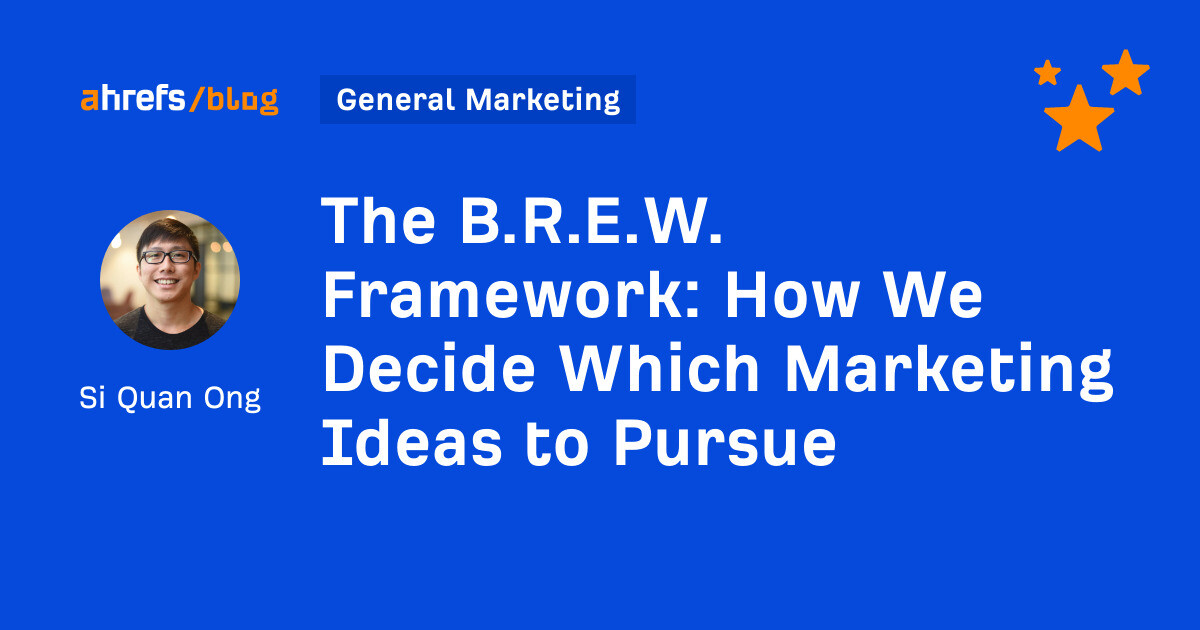
At any point, any marketing team has infinite ideas and opportunities. New technologies, channels, strategies, and tactics are constantly emerging. It’s impossible for any team to pursue every idea. What do you do then? How do you vet each idea and decide which one to invest resources in? We’re no strangers to this problem too. That’s why we decided that we needed a consistent way to vet ideas. Not just to pick the best ones, but to also understand why we were pursuing them. Getting things done is good, but you also need to be strategic and avoid wasting time and resources on initiatives that won’t move the needle. So we created the B.R.E.W. framework. The BREW framework stands for: Let’s unpack each part: “How well can you pitch your product?” We score every marketing idea from 0-3 based on how essential our product is to the problem. “Who will see this and how many?” Reach isn’t just about numbers; it’s also about relevance. A viral tweet or TikTok video might get millions of views and charge you with dopamine, but if they’re all random people, then it’s just noise. For example, I once went viral on Threads. I didn’t even get one new follower Contrast this with my colleague Louise’s article on how to track AI traffic. The keyword she targeted didn’t have much search volume: But her article was read by decision makers, even influencing them to make a change in their workflow: “How much time and resources would you need? And is it even worth it?” Assessing effort isn’t just about the hours required; it’s about understanding the hidden costs and implications: Rather than shying away from ambitious, high-effort ideas, always start by asking: “What’s a lower-effort version of this we can test first?” For example, our two-day conference, Ahrefs Evolve, is a huge marketing effort that takes at least half a year to plan and execute. It involves coordinating between external vendors and internal teams, such as design. It costs us at least $400,000. But we didn’t jump straight into this project. It actually took us years before we even decided to run one. We started by sponsoring events, then moved on to light networking sessions we hosted at our office. We only started scaling and increasing complexity when we proved the value at each step. “Do you have the right people or skills to execute this idea effectively?” Without the right people, or even an internal champion to lead the way, even the best ideas can stall or fail. Critically evaluate your team’s capabilities. Transparently acknowledge your team’s strengths and gaps upfront. If necessary, supplement with freelancers, consultants, or agencies. For example, when our Chief Marketing Officer Tim Soulo wanted to build links to his content, he hired an agency instead of asking the team to handle it. Not because the team didn’t know how, but because he would have had to redirect our time and attention away from other tasks to helping him build links. He judged that it wasn’t a good use of resources and therefore decided to outsource it to an agency with SOPs and processes. Our B.R.E.W framework can be applied on any scale. You can apply it to individual tweets, posts, and articles or something as big as running a two-day conference. Here are some examples of how we scored different marketing activities: Before we created B.R.E.W, I once pitched the topic “blog post ideas” to the content team. There was a simmering feeling from the team that targeting this keyword wasn’t the best use of my time. Not only was it an extremely beginner keyword, its search volume was also on the decline. Makes sense: with LLMs, who still needs an article to give them blog post ideas? The idea was shot down. In fact, this was one of the triggers behind B.R.E.W. We wanted to stop evaluating marketing ideas by gut and have a process of vetting them. Here’s how I would evaluate the topic today with B.R.E.W: Real click-through rates for this topic must have declined significantly. Further, it’s an extremely beginner keyword, so we’re reaching newbies. Not our ideal customer (or perhaps in the future.) We eventually concluded that since it was so low-effort, the payoff was worth it and therefore I wrote the post. In 2023, we launched “Top Websites”: a page showing the top 1000 most visited websites in the world by our organic search traffic estimates. This is how we scored it: Here’s a fun fact: this project was actually in the pipeline for years. But it was considered too high-effort—we needed developer resources, copy, design, someone to lead the project, and more. So, it was never prioritized. However, things changed. The team grew bigger, so we had more developer resources. We hired a product manager whose one of his responsibilities included programmatic SEO projects. The advancement of LLMs also made everything easier. For example, we could generate copy for each page without having a poor copywriter writing with his eyes glazed over. The lesson here: just because a project didn’t score well the first time with B.R.E.W., doesn’t mean you totally give up on it. It simply goes back into your backlog of ideas. Revisit them once in a while and re-score them. Some of these projects become possible when your team grows, your resources improve, and technology advances. In 2024, we organized a 500-person, multi-day conference in Singapore called Ahrefs Evolve. Here’s how we scored it: They’re even flying down (if they’re not locals) to the conference in Singapore. Talk about commitment. However, we’ve built up to this over the past years. We’re not starting from scratch. We can re-use existing resources and update and upgrade them. If we had scored our conference from the beginning, it would never have been done. Effort would have been extremely high; we would have to learn and start everything from scratch (and hope to not lose too much money); and we would have to redirect someone from their responsibilities to do it (without any experience!) Indeed, it was probably the case for many years as we watched our competitors and other SaaS companies launch their own conferences. However, by reducing the effort and making something smaller first, it reduces the complexity and can serve as proof-of-concept for the channel. In fact, this is probably how we would have scored our first networking sessions (SEO Beer and Snacks): To get a green light, your marketing idea should be balanced in terms of these four factors. For example, if there’s a chance to get insane reach, but the business potential is low and effort is high, then it’s probably not worth it. On the other hand, if business potential is high and effort is low, then the idea might make sense even if reach is low. In the end, no one can tell you whether an idea is good or bad. It’s up to you to vet, score, and evaluate them to see if they have legs. And remember: even if an idea doesn’t have legs now, it doesn’t mean it’s not viable forever. Things change and a backlogged idea can become the next idea to execute today. 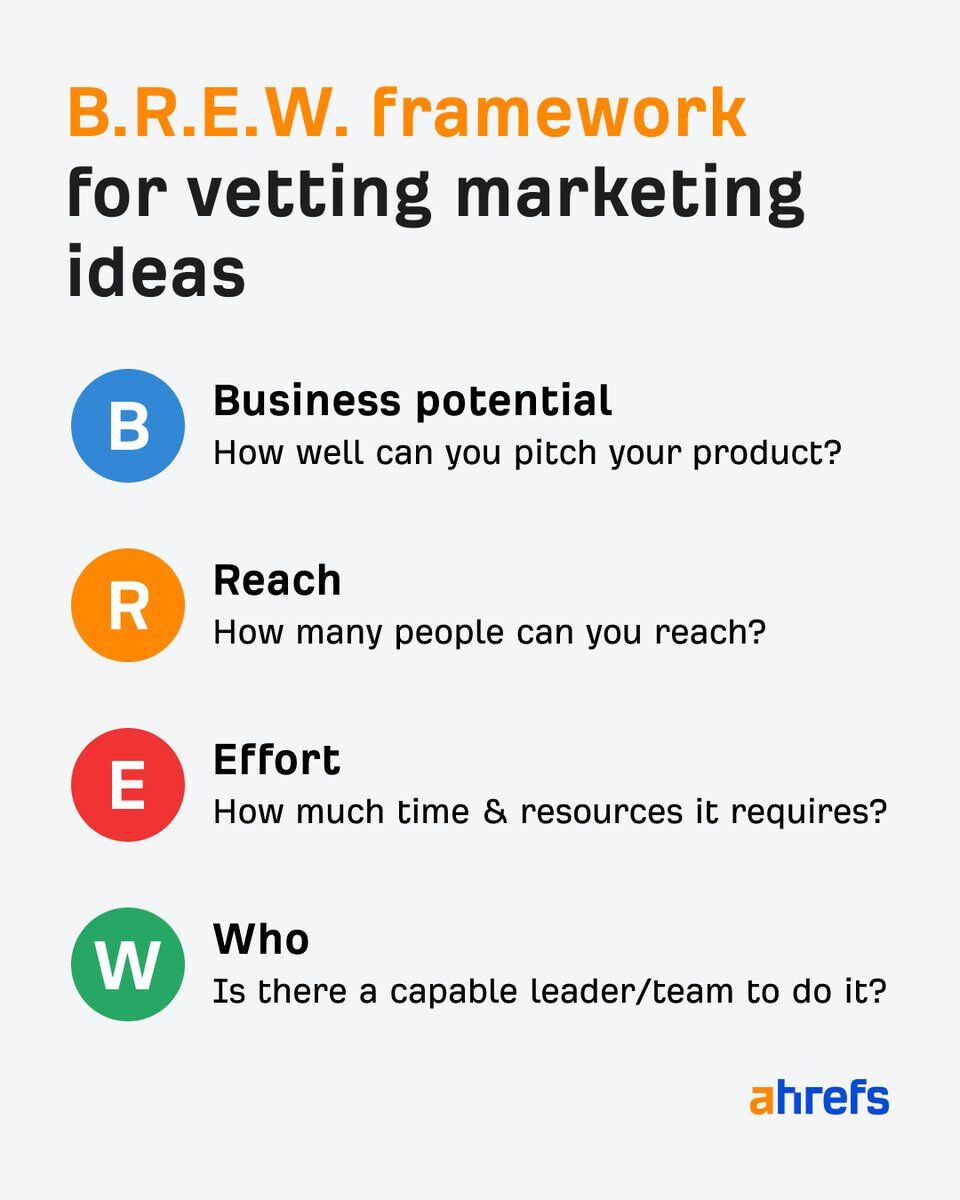
B: Business Potential
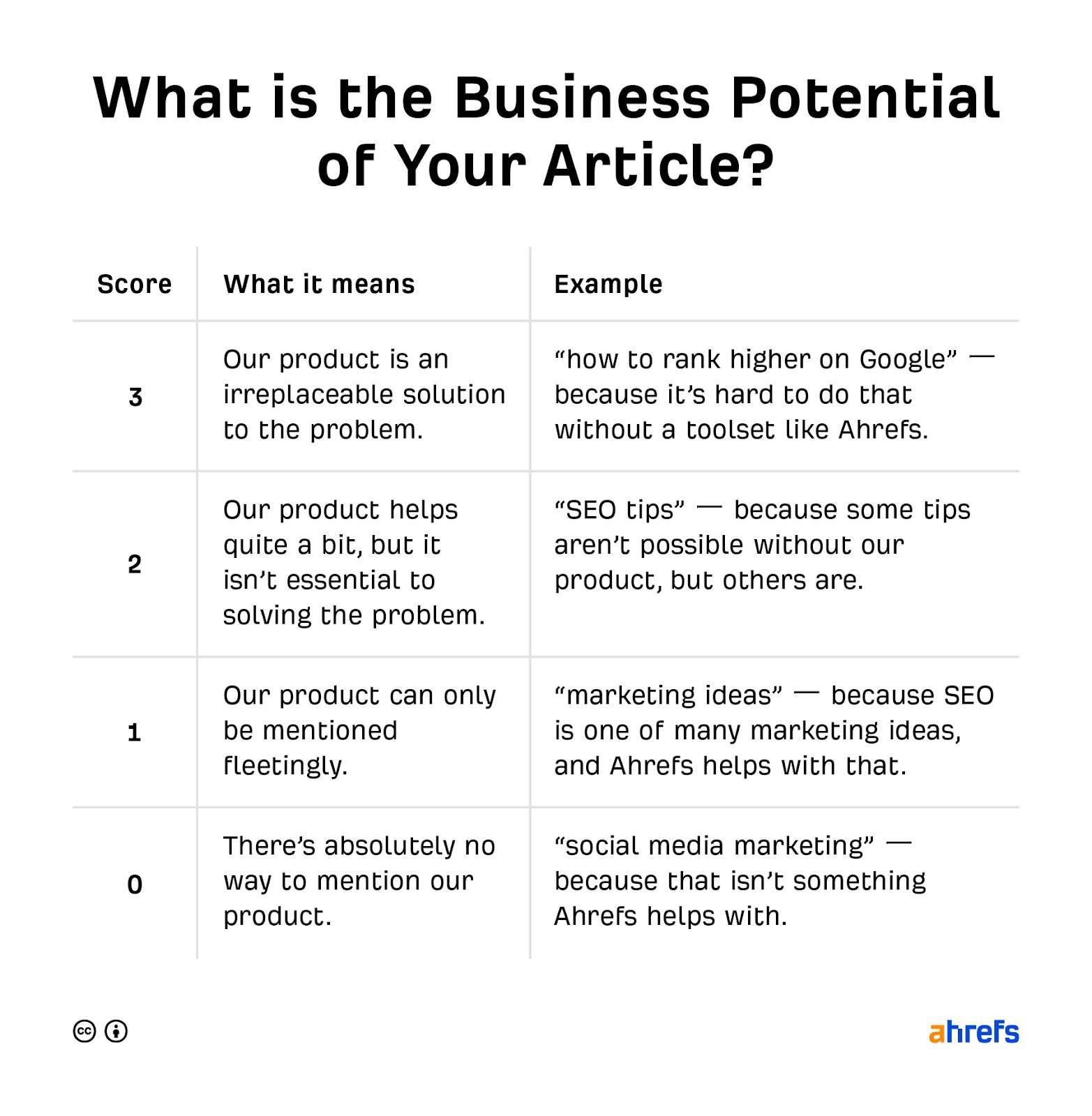
R: Reach


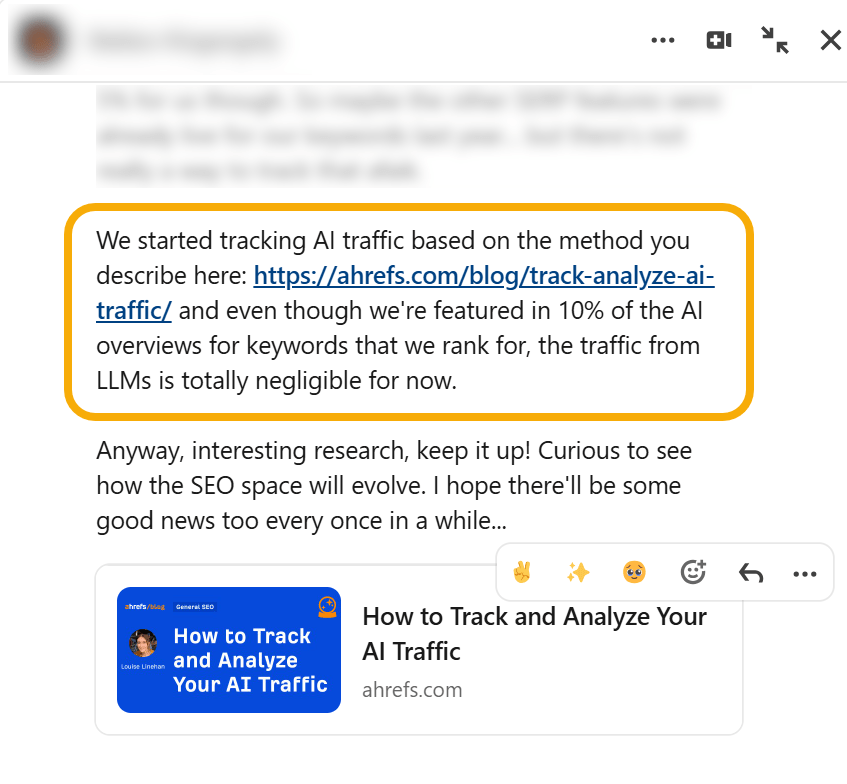
E: Effort
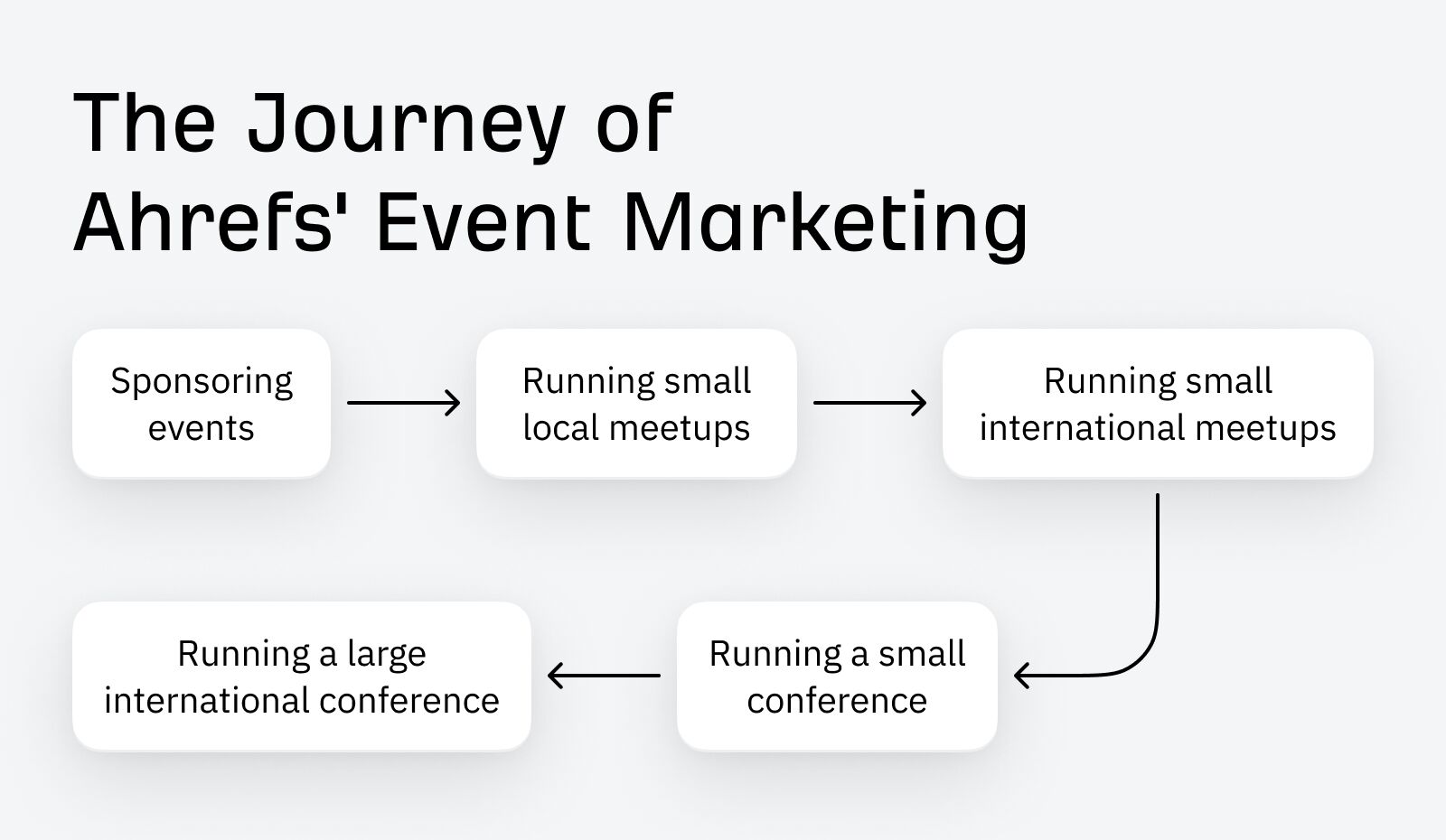
W: Who
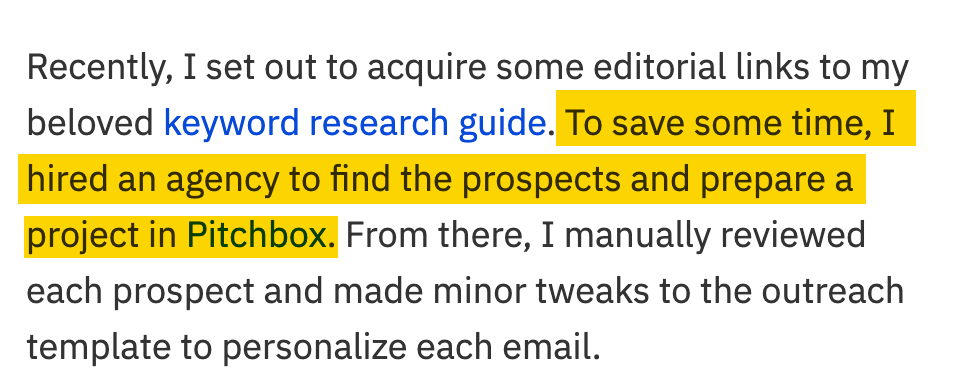
1. Targeting the keyword “blog post ideas”
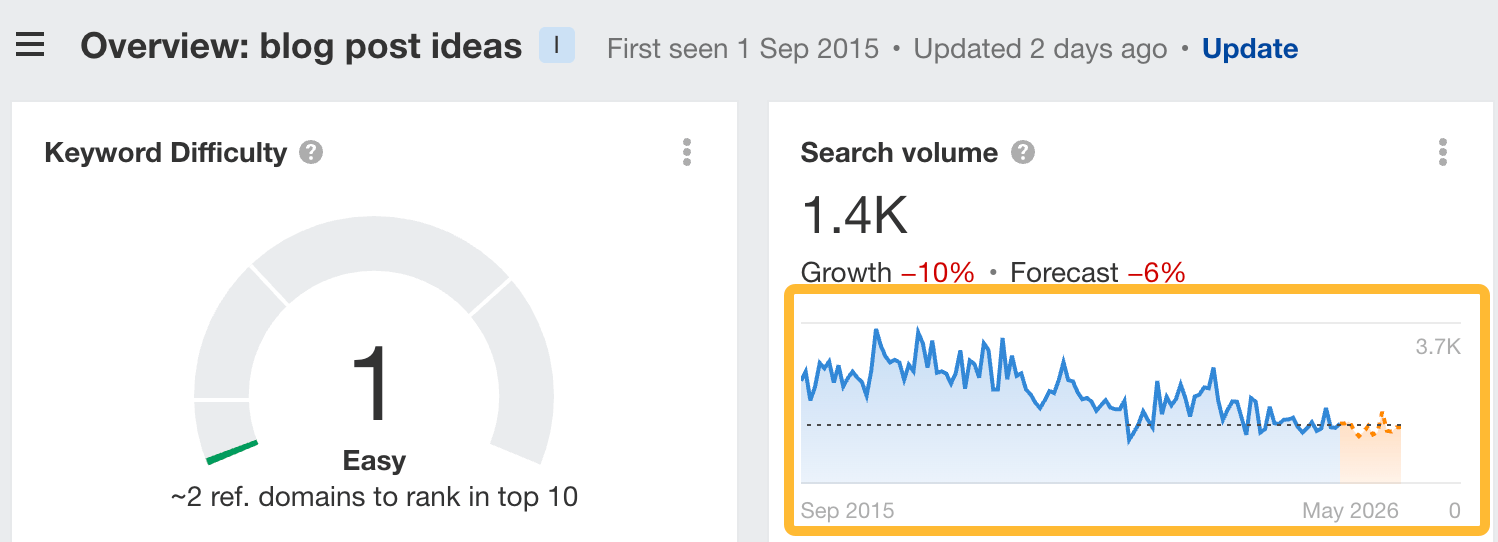
B.R.E.WScoreReasoning Business potential 1 You can use Keywords Explorer to generate ideas, but it’s not 100% necessary. Reach Decent Ahrefs’ Keywords Explorer shows a Traffic Potential of 2,300, which is pretty good. However, its actual search volume is declining. A Google search for the topic also shows a “Sources from the web” SERP feature that lists out plenty of ideas. Effort Low I can whip out this post in a day or less. Who Me We have a content team (yes, me) that can make this post. 2. Programmatic SEO for ‘Top Websites’
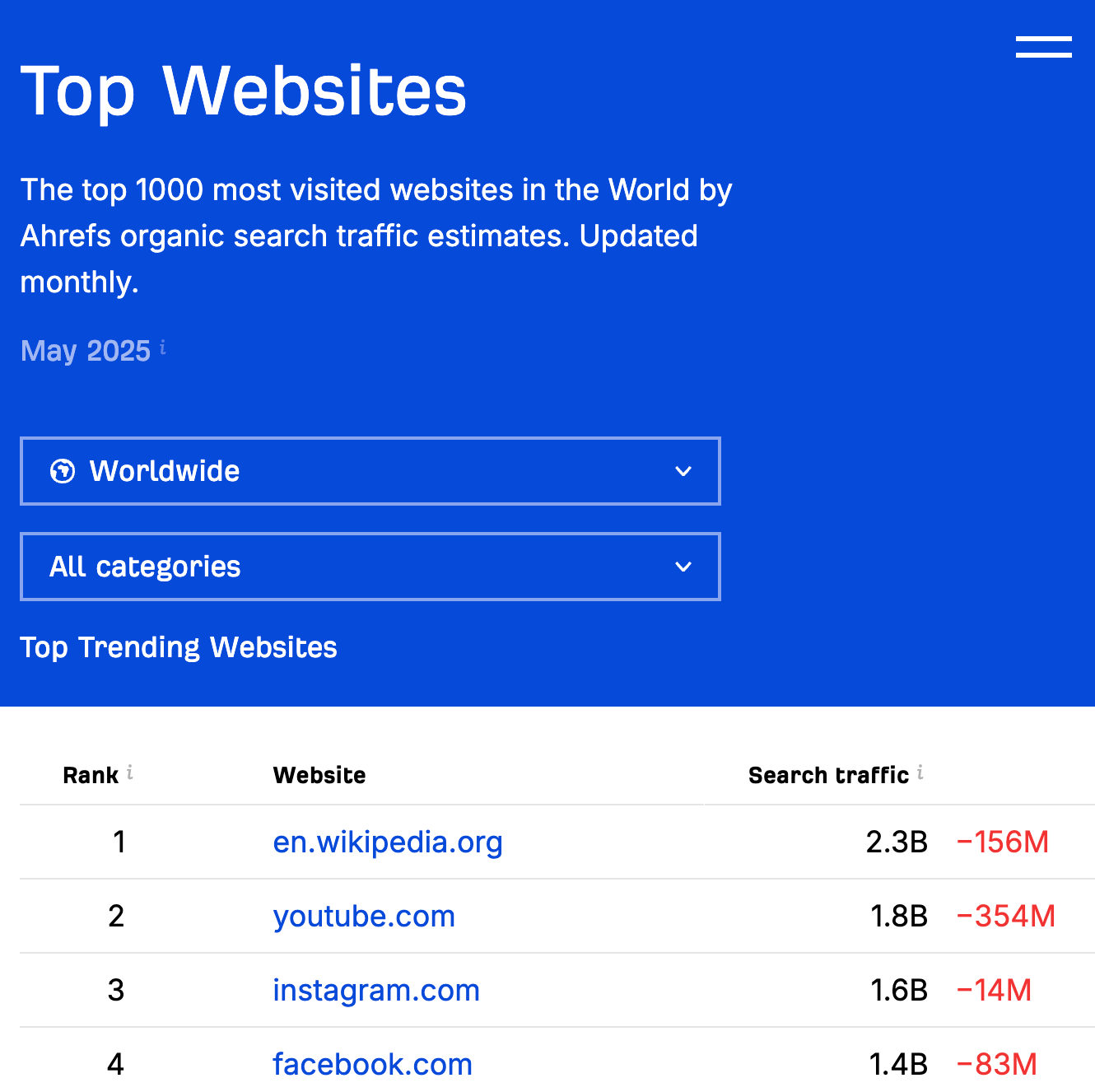
B.R.E.WScoreReasoning Business potential 2 While it doesn’t show off our product in action, it heavily features our data and advertises how you’ll need Ahrefs to see search traffic for other websites. Reach Very high Not only do the keywords “most popular websites” and “most visited websites” have tons of traffic potential, we can also rank for each website’s brand. However, the traffic may not be of the highest quality. Effort Medium Developers were needed but LLMs made a lot of the work easier (e.g., copy) Who Our product manager We have a dedicated product manager to see this project through 3. Ahrefs Evolve
B.R.E.WScoreReasoning Business potential 3 The conference is literally Ahrefs Evolve. Since it’s our conference, we can promote our brand and toolset heavily everywhere. Reach Medium Reaching 500 people isn’t a lot. However, these 500 people will likely be decision-makers or people who can influence them. Many of them will also be our customers with whom we can build closer relationships. Effort Very high Organising a conference is no small matter. Lots of coordination between internal teams, external vendors, sponsors, and speakers; a lot of planning and execution; a lot of marketing so that tickets can be sold and sponsors want to sponsor the conference; a lot of fire-fighting as Murphy’s Law dictates. Who Shermin We have a dedicated event marketing manager. B.R.E.WScoreReasoning Business potential 2 Since it’s just networking, it doesn’t have high business potential. But we can increase its business potential by adding branding elements to the meetup (e.g., giving away swag, using branded standees, inviting enterprise clients so we can build goodwill with customers, etc.) Reach Low Networking sessions are typically small. However, they are extremely targeted as the chances of random people turning up are very low. Effort Low We already have an existing venue: our office. We just need to send out invites and get people to come. Who Shermin We have a dedicated event marketing manager. But even before that, I had experience organizing networking events. 
Final thoughts

 BigThink
BigThink 









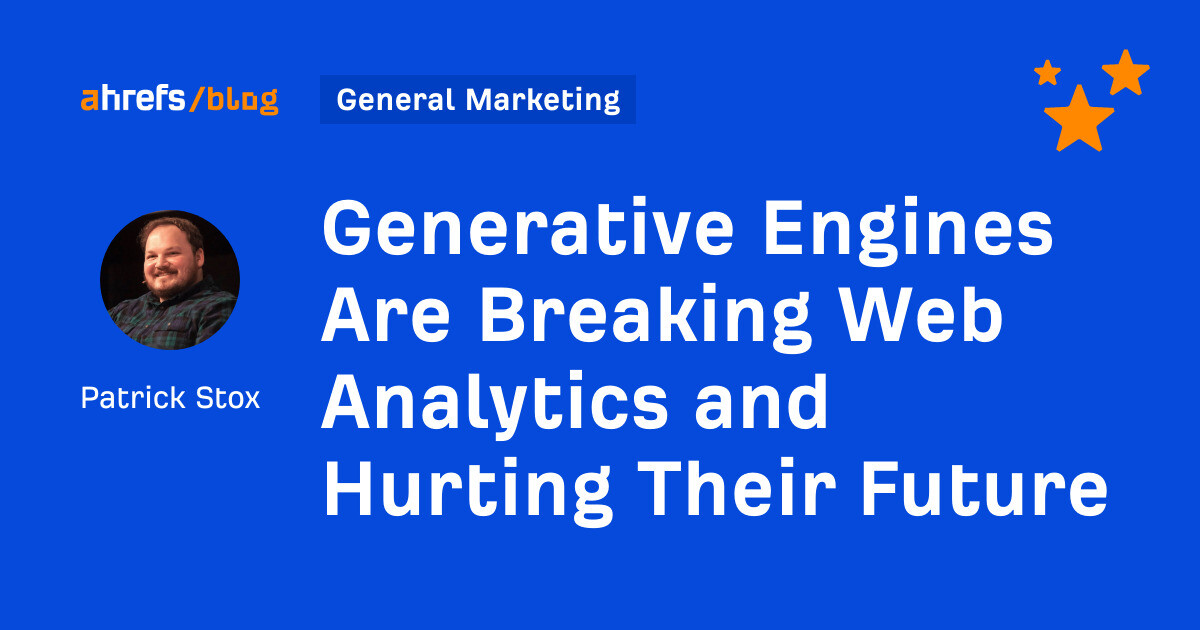



















.jpg&h=630&w=1200&q=100&v=6e07dc5773&c=1)
